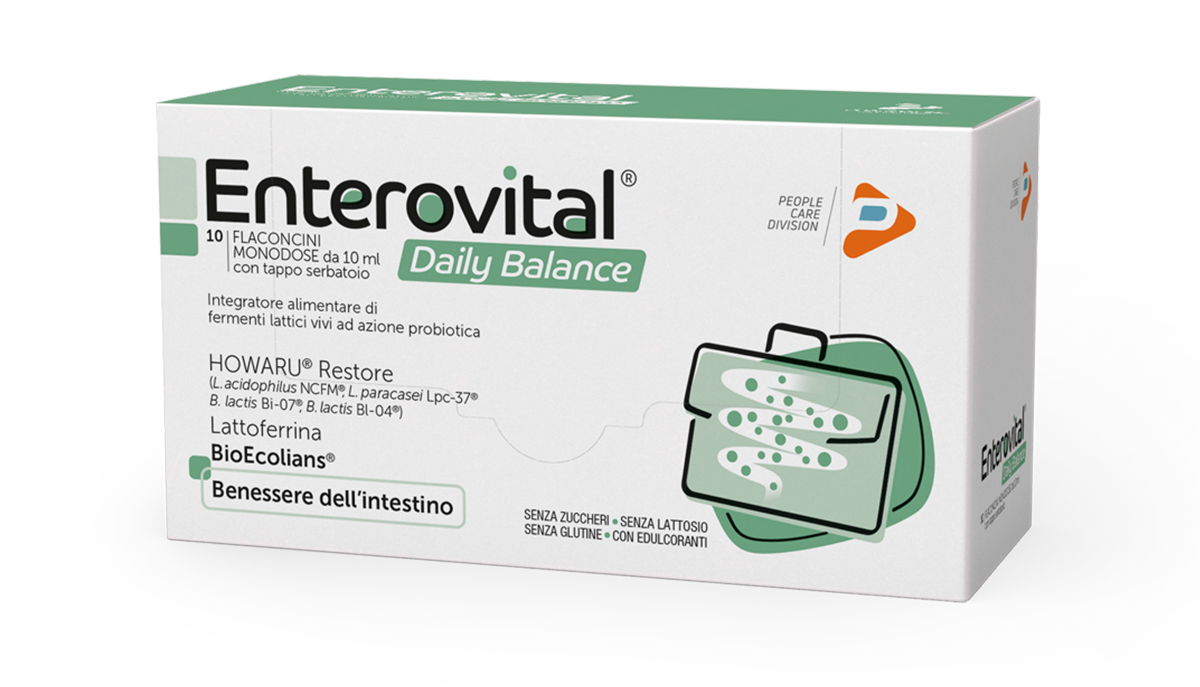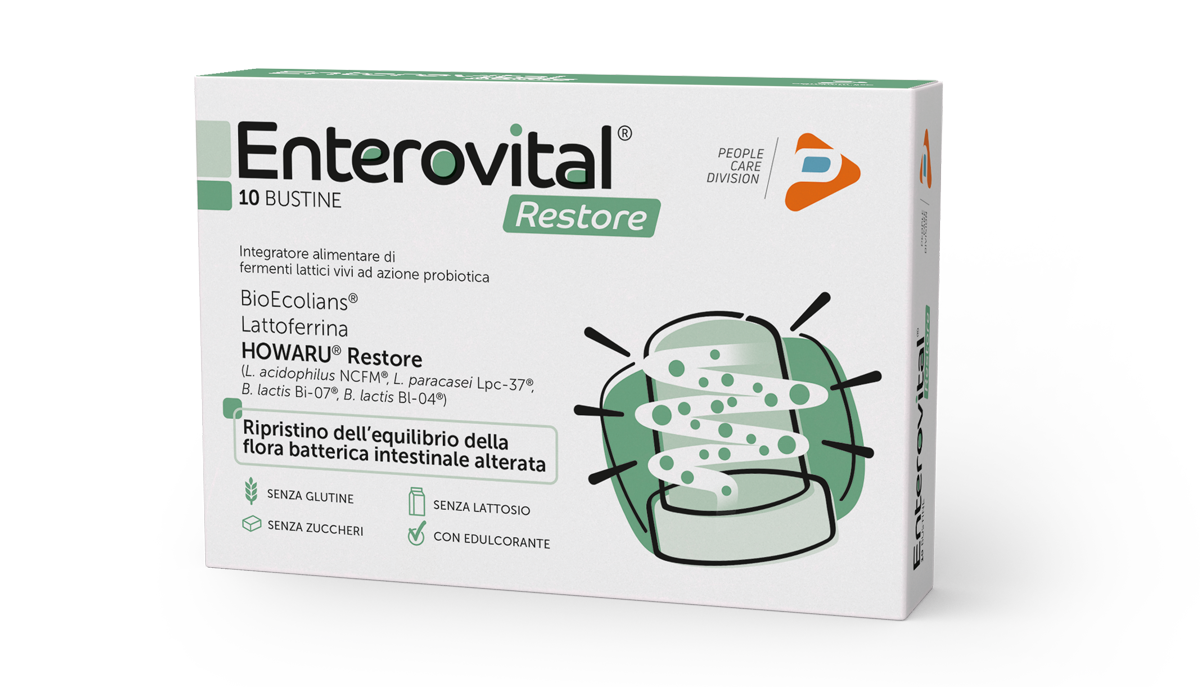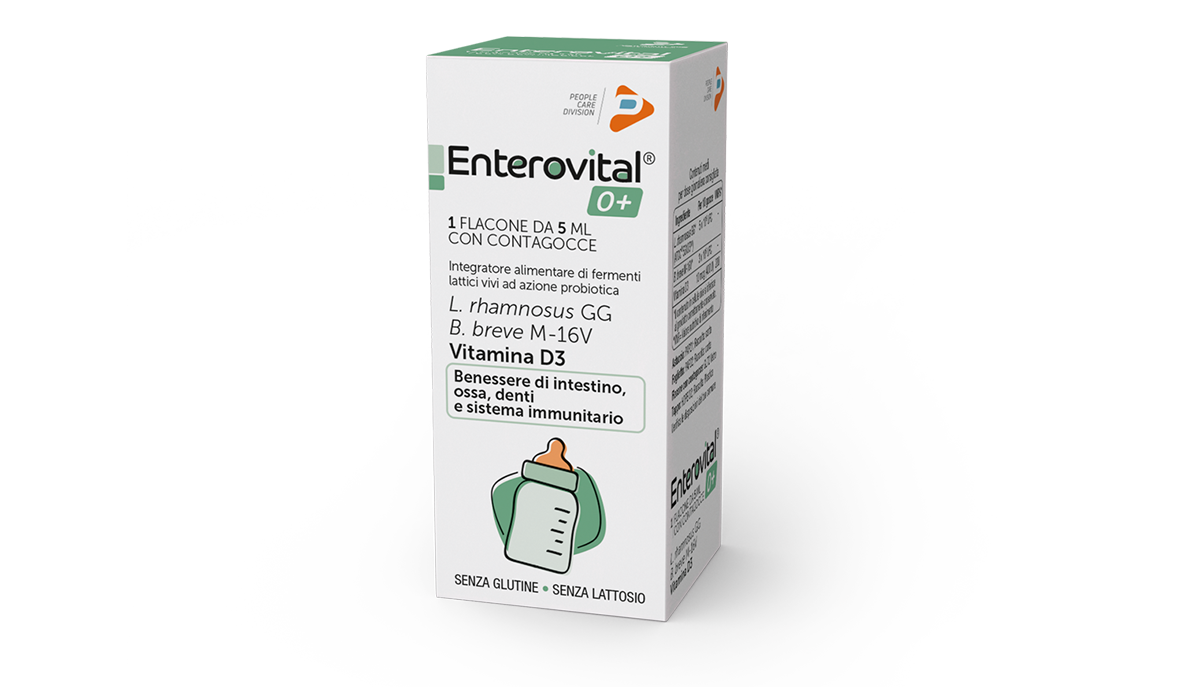Consumatori e Pazienti » Prodotti » Enterovital Linea
Formati disponibili
ENTEROVITAL® è la linea di integratori di fermenti lattici vivi a spiccata azione probiotica e riequilibranti la flora intestinale alterata.
HOWARU® is a registered trademark of IFF or its affiliates.
L’intestino, nostro secondo cervello, funge da barriera rispetto all’ ambiente esterno e permette l’assorbimento, dal cibo, dei nutrienti di cui abbiamo bisogno ogni giorno. Il mantenimento dell’equilibrio della flora intestinale favorisce inoltre la funzionalità del sistema immunitario.
Cambi di stagione, infezioni, disordini alimentari e stress fisici e mentali possono creare squilibri, alterando il benessere intestinale e dell’intero organismo.
Diarrea, stitichezza, fermentazione, gonfiore e dolore addominale non devono essere trascurati perché prova di questo squilibrio.
SENZA GLUTINE, SENZA LATTOSIO
| Ingredienti | PRO 1 capsula | DAILY BALANCE 1 flaconcino | RESTORE 1 bustina |
|---|---|---|---|
| HOWARU® Restore* | 10 mld UFC | 2,5 mld UFC | 5 mld UFC |
| Lattoferrina | 25 mg | 50 mg | |
| BioEcolians® | 500 mg | 1 g |
*HOWARU® Restore: Lactobacillus acidophilus NCFM®, Lactobacillus paracasei Lpc-37 ™M, Bifidobacterium lactis Bi-07™M, Bifidobacterium lactis BI-04™M
| Ingredienti | Quantità |
|---|---|
| L. rhamnosus GG | 5×109 |
| B. breve M16V | 3×109 |
| Vitamina D3 | 400UI |
| Cookie | Durata | Descrizione |
|---|---|---|
| cookielawinfo-checkbox-analytics | 11 months | Questo cookie è impostato dal plugin GDPR Cookie Consent. Il cookie viene utilizzato per memorizzare il consenso dell'utente per i cookie nella categoria "Analisi". |
| cookielawinfo-checkbox-functional | 11 months | Il cookie è impostato dal GDPR cookie consenso per registrare il consenso dell'utente per i cookie nella categoria "Funzionali". |
| cookielawinfo-checkbox-necessary | 11 months | Questo cookie è impostato dal plugin GDPR Cookie Consent. I cookie vengono utilizzati per memorizzare il consenso dell'utente per i cookie nella categoria "Necessari". |
| cookielawinfo-checkbox-others | 11 months | Questo cookie è impostato dal plugin GDPR Cookie Consent. Il cookie viene utilizzato per memorizzare il consenso dell'utente per i cookie nella categoria "Altro. |
| cookielawinfo-checkbox-performance | 11 months | Questo cookie è impostato dal plugin GDPR Cookie Consent. Il cookie viene utilizzato per memorizzare il consenso dell'utente per i cookie nella categoria "Prestazioni". |
| viewed_cookie_policy | 11 months | Il cookie è impostato dal plugin GDPR Cookie Consent e viene utilizzato per memorizzare se l'utente ha acconsentito o meno all'uso dei cookie. Non memorizza alcun dato personale. |



